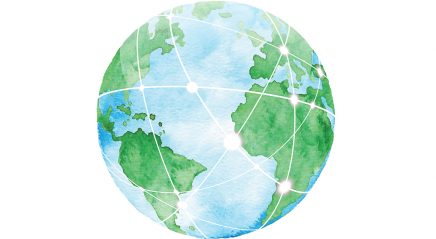Author Torbjørn Greipsland has written or edited 18 books on topics ranging from emigration to Christian artists to the Norwegian royal family. For his latest, To the Ends of the Earth (Ventura, 2017), he set out to document what he considered an underappreciated aspect of his country’s history: Norway’s contributions to missionary work around the globe.
In doing so, he came to realize just how in sync Norwegian American missionaries were with the ELCA—even those who served well over a century ago. “As the ELCA does today, so did the pioneers,” Greipsland said. Both aspired to build schools, provide health care and bolster indigenous Christians in leadership.
To the Ends of the Earth, for which he served as editor, “gives the names of more than a thousand Norwegian American missionaries, most of them from the ELCA Archives, and it goes into detail with 30 of them,” Greipsland said. “This is the only book providing an overview of the missionaries and their stories.”
A former magazine and newspaper editor who also served as a Lutheran pastor, Greipsland was particularly struck by how generously the book’s subjects gave of themselves. “The missionaries, many of them quite young, sacrificed life and health to convey the Christian message to other people in different cultures and countries and by building congregations, schools and hospitals,” Greipsland said.
Greipsland noted that in the 1800s and early 1900s, many of the missionaries toiled in places that were hostile to foreigners in general and to missionaries in particular. “Both sorrow and joy are important ingredients of the book,” he said.
Most of the missionaries described in To the Ends of the Earth were Lutherans and belonged to U.S. groups and churches that later unified into the ELCA, Greipsland said. “The call to mission work that their savior and Lord had given them made them continue through the bad days as well as the good,” he added. “And they saw results. In many ways, the pioneers are very good examples for us today.”
Called to service
One such stalwart was Erik Tou. Born outside Stavanger, Norway, in 1857, Tou immigrated to the United States in 1881, studied theology at Augsburg Seminary in Minneapolis (now Augsburg University) and volunteered for missionary service.
In 1889, Tou and his wife, Elisabeth, set out for Madagascar, then beset by tribal and colonial warfare. When he returned to the United States in 1903, he left behind four family graves—those of his wife, who had died from complications of childbirth, and three of his four children, who had succumbed to illness.
Nevertheless, Sigmund Edland wrote in his chapter on Tou that the missionary left Madagascar with joy because he had seen lives changed, including that of a king who was ultimately baptized after having long disparaged Christianity.
Other missionaries endured equally severe hardships in their own outposts, in places such as India, China and Alaska.
“When Ella Rølvåg Brune was disembarking on Little Diomede Island in the Bering Strait in 1935, one of the native inhabitants needed to drag her up a mountainside with a rope so she could reach the settlement,” Greipsland said. “Brune had married a man she just met, Oskar Brune, because they shared a call to work in Alaska.”
“Many Norwegian American missionaries sent out from America have not been given the attention they deserve.”
As a new missionary in China in 1905, nurse Ellen Fredriksen met a young boy who tried to stone her. She prayed for him, and he eventually became her most valued co-worker.
Also in China, pastor and missionary doctor Casper Skinsnes was twice ordered killed by warlords, but his popularity with the people saved him. He served in China from 1915 to 1942, and when he returned after World War II, a throng of thousands welcomed him back.
Other key figures profiled include the Braaten family, which sent seven members into missionary service; Malla Moe, who connected with thousands in Africa, including royalty; and Lars Olsen Skrefsrud, a one-time prison inmate who made a profound impact on Norwegians in the U.S. during his 16-month missionary visit in the mid-1890s.
“Many who heard [Skrefsrud] were called to missionary service,” Greipsland said. “But he, as well as many Norwegian American missionaries sent out from America, have not been given the attention they deserve.”









